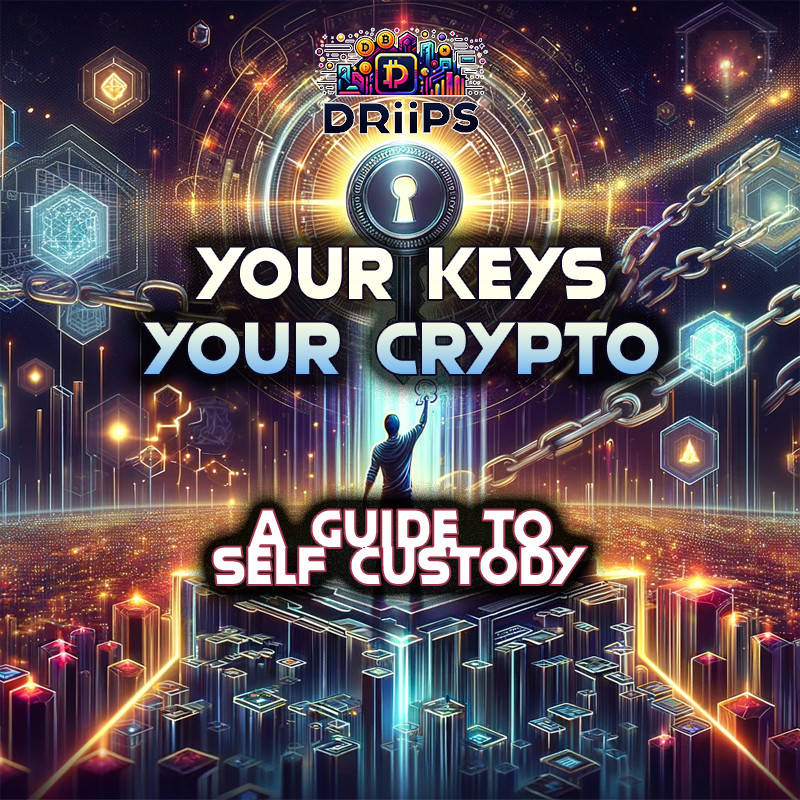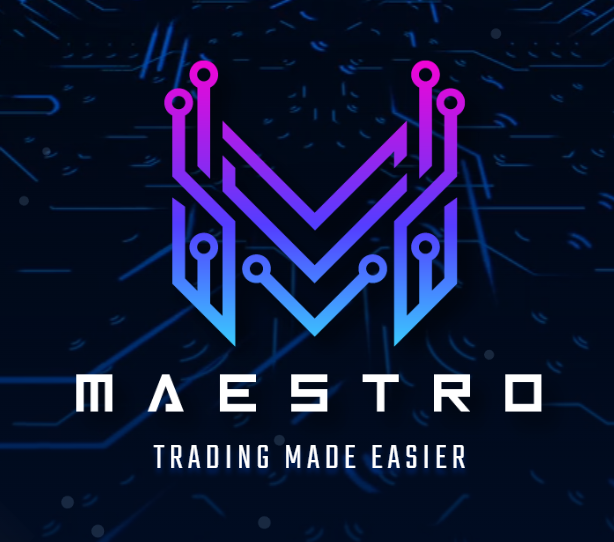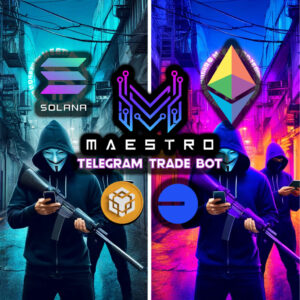In the fast-evolving landscape of cryptocurrency, the concept of self custody stands as a pillar for those who seek to fully embrace the decentralized ethos of blockchain technology. Self-custody in crypto means individuals hold and manage their assets through private keys or wallets, without intermediation from third-party services. This approach is not just a technical preference; it embodies a philosophy of financial sovereignty and security. Here, we delve into five compelling reasons why adopting self custody is crucial in the crypto realm.

Why Self Custody?
1. Complete Control Over Your Assets With Self Custody
At the heart of self custody is the fundamental principle of autonomy. Unlike traditional banking systems or centralized crypto exchanges where institutions have control over your assets, self-custody ensures that you are the sole custodian of your funds. This level of control empowers you to manage, transfer, and secure your assets without seeking permission or being subject to the constraints and terms of a third-party service. The independence granted by self custody aligns perfectly with the decentralized spirit of cryptocurrencies, offering a liberating experience of financial self-sovereignty.
2. Enhanced Security
The digital age brings with it sophisticated threats to financial assets, making security paramount. Centralized platforms, while convenient, present lucrative targets for cybercriminals, leading to high-profile hacks and thefts. In contrast, self custody places the security of your assets in your hands, significantly reducing the risk of losing your funds to such breaches. By maintaining control of your private keys and adhering to best security practices, you can safeguard your assets against external threats, ensuring peace of mind.
3. Privacy Preservation
In an era where privacy is increasingly precious, self custody offers a refuge for those looking to keep their financial affairs under wraps. Centralized exchanges often require users to undergo rigorous identity verification processes, compromising their privacy. Self custody, however, allows for greater anonymity, as transactions can be conducted without revealing personal information. This aspect is particularly appealing to privacy-conscious individuals who value the confidentiality of their transactions and holdings.
4. Censorship Resistance
One of the most compelling arguments for self custody is its ability to circumvent censorship. In various parts of the world, individuals face restrictions on their financial freedom due to government regulations or corporate policies. Centralized platforms, being subject to these regulations, can freeze accounts or block transactions. Self custody, by its nature, is resistant to such censorship, enabling users to freely access and transfer their funds without interference. This freedom is especially crucial in regions with unstable financial systems or oppressive regimes, where financial autonomy can be a lifeline.
5. Resilience Against Institutional Failures
The history of finance is littered with the failures of once-trusted institutions, from bank collapses to the insolvency of centralized crypto platforms. These events serve as stark reminders of the risks associated with entrusting one’s assets to third parties. Self custody, by eliminating reliance on these institutions, offers a bulwark against such failures. By holding your assets independently, you are not subject to the solvency or integrity of a centralized entity, providing a more stable foundation for your financial security.
Self Custody Solutions

Self custody solutions for cryptocurrency holders offer various ways to securely store and manage their digital assets independently, without relying on third-party services like exchanges or wallet providers. These options range from software solutions to physical hardware devices, each with its own set of features designed to meet different security needs and user preferences. Below are some of the most common self-custody options available:
1. Hardware Wallets
Hardware wallets are physical devices that store the user’s private keys offline, in a secure environment. They are considered one of the safest self custody solutions because they are immune to online hacking attempts when used correctly. Transactions are signed within the device and then broadcast to the blockchain, ensuring the private keys never leave the device. Popular hardware wallet brands include Ledger, Trezor, and Coldcard. These wallets often come with backup options, like recovery phrases, to recover assets in case the device is lost or damaged.
2. Software Wallets
Software wallets are applications that can be installed on a computer or smartphone. They offer convenience and ease of use, making them suitable for everyday transactions. Software wallets store private keys on the device they are installed on, which means they can offer a high degree of security if the device is properly secured and malware-free. Examples include MetaMask, Phantom, Trust Wallet and many more. Users should ensure their devices are secure and back up their wallets to protect against data loss.
3. Paper Wallets
Paper wallets are a form of cold storage, where the wallet’s private keys and public addresses are printed on paper. They are considered secure because they are completely offline, but they require careful handling to prevent loss or damage. Paper wallets can be generated using specific websites or tools that allow users to print their keys and QR codes. However, due to their static nature and the potential for user error, paper wallets are less recommended for beginners.
4. Steel Wallets
Steel wallets are a durable version of paper wallets, designed to protect backup phrases or private keys from physical damage such as fire or water. Users engrave or stamp their recovery phrase onto metal plates, significantly increasing the resilience of their backup. Brands like Cryptosteel and Billfodl are popular choices. Steel wallets are an excellent complement to any self-custody solution, providing a robust way to ensure recovery phrases can survive extreme conditions.
5. Multisignature Wallets
Multisignature (multisig) wallets require more than one private key to authorize a transaction, adding an extra layer of security. They are especially useful for organizations or groups where funds need to be accessed by multiple parties. Multisig can also provide security benefits for individuals by distributing keys across different devices or locations, making it much harder for attackers to gain access to all necessary keys. Wallets like Electrum and BitGo offer multisignature options.
6. Smart Contract Wallets
Smart contract wallets use Ethereum smart contracts to manage the wallet’s assets, offering features like recovery options and spending limits that are not possible with traditional wallet types. These wallets can provide enhanced security features, such as allowing access to funds only after certain conditions are met. Examples include Argent, which allows for guardians to recover access to the wallet, and Gnosis Safe, tailored for managing collective funds with high security.
Security Considerations
Self custody solutions for cryptocurrency holders offer various ways to securely store and manage their digital assets independently, without relying on third-party services like exchanges or wallet providers. These options range from software solutions to physical hardware devices, each with its own set of features designed to meet different security needs and user preferences. Below are some of the most common self-custody options available:
Additional Security Considerations

Regardless of the self custody option chosen, security practices are crucial. This includes safeguarding backup phrases, using secure and unique passwords, regularly updating software, and practicing operational security to prevent phishing and other forms of social engineering. The goal of self-custody is not just to hold digital assets but to do so in a manner that ensures their safety and accessibility over time.
Software Wallets
When it comes to managing cryptocurrencies and tokens on various blockchains, software wallets play a crucial role. These wallets not only store your private keys securely on your device but also facilitate transactions and interactions with decentralized applications. Below is a list of software wallets compatible with the Ethereum, Solana, Arbitrum (Arb), Binance Smart Chain (BNB), Optimism (OP), and Avalanche (AVAX) blockchains:
Multi-Chain Wallets (Supporting Multiple Blockchains)
- MetaMask: Primarily focused on Ethereum but compatible with other EVM (Ethereum Virtual Machine)-compatible chains like BNB (Binance Smart Chain), Arbitrum, Optimism, and Avalanche through custom RPC (Remote Procedure Call) settings. GET METAMASK
- Phantom Wallet: A mobile wallet supporting a wide range of cryptocurrencies, for Solana, Ethereum and Polygon Chains . It’s user-friendly and ideal for accessing dApps across different ecosystems.
- Coinbase Wallet: A self custody wallet from Coinbase that supports Ethereum, Arbitrum, Binance Smart Chain, Avalanche, and many other chains. It offers a simple interface for managing tokens and interacting with dApps.
- Atomic Wallet: A desktop and mobile wallet offering support for multiple blockchains, including Ethereum, BNB, and Avalanche. It also features a built-in exchange.
- Guarda Wallet: Available on desktop and mobile, Guarda supports a vast array of blockchains, including Ethereum, Solana, Binance Smart Chain, Avalanche, and others, along with the ability to interact with dApps.
- Solfare Wallet: A desktop and mobile wallet offering support for Solana. It also features a built-in exchange and browser.
Blockchain-Specific Wallets
- Ethereum (ETH)
- MyEtherWallet (MEW): A web-based wallet specifically designed for the Ethereum blockchain, supporting ETH and all ERC-20 tokens.
- Solana (SOL)
- Phantom: A popular wallet in the Solana ecosystem, offering support for SOL and SPL tokens, with features like staking and NFT management.
- Sollet.io: A web-based wallet created by the Serum team, supporting Solana and SPL tokens.
- Arbitrum (Arb)
- Arbitrum doesn’t have exclusive wallets but is supported by multi-chain wallets like MetaMask and Coinbase Wallet when configured for its network.
- Binance Smart Chain (BNB)
- Binance Chain Wallet: The official wallet of Binance, supporting Binance Chain, Binance Smart Chain, and Ethereum.
- Optimism (OP)
- Optimism doesn’t have exclusive wallets but is accessible through EVM-compatible wallets like MetaMask by configuring the network settings.
- Avalanche (AVAX)
- Core (previously Avalanche Wallet): A wallet designed by Ava Labs that supports the Avalanche network and all tokens on its platform.
Telegram Bot Wallets
Telegram Trade bots Generate a wallet inside the app. This can easily be linked to a software wallet and seen on both platforms.
- Multichain Telegram Bots
- MAESTRO : BOT Chains: ETH BASE SOL ARB
- LOOTER : BOT Chains ETH SOL BASE BLAST ARB FTM AVAX
- HYPER : BOT Chains ETH BASE ARB OP BSC POLY
- SIGMA BOT : BOT Chains ETH BSC AVAX ARD BASE BLAST
- SHURIKEN — Chains ETH BASE SOL BSC ARB BLAST | Use BOT
- X-SHOT — MULTICHAIN/NEW | Use BOT
This list provides a starting point for individuals looking to manage their assets across these diverse blockchains. When choosing a software wallet, consider factors such as security features, ease of use, and compatibility with the cryptocurrencies you wish to manage. Always ensure you are downloading wallets from official sources to avoid scams and malware.
Transitioning From a Cex to Self Custody- Step by Step
Transitioning from a centralized exchange (CEX) to a self custody wallet is a crucial step for those seeking more control and security over their cryptocurrencies. This process involves moving your assets from the exchange, where the exchange controls the private keys, to a wallet where you have full control. Here’s a step-by-step guide to making this transition smoothly:

Step 1: Choose a Self-Custody Wallet
- Research: Look into different types of wallets (hardware, software, mobile, etc.) considering factors like security features, supported cryptocurrencies, ease of use, and compatibility with your operating system.
- Selection: Choose a wallet that best fits your needs. For beginners, software or mobile wallets like MetaMask, Trust Wallet, or Ledger (hardware) might be suitable choices.
- Download/Install: Download the wallet from the official website or app store. Be cautious of phishing sites and ensure you’re using the correct URL.
Step 2: Set Up Your Wallet
- Create a New Wallet: Follow the instructions within the wallet to create a new wallet. This usually involves generating a new private key.
- Secure Your Recovery Phrase: Write down the recovery phrase (usually 12 to 24 words) and store it in a secure location. This phrase is crucial for recovering your wallet if you lose access to your device.
- Create a Strong Password: If your wallet requires a password, ensure it’s strong and unique. This adds an extra layer of security.
- Backup Your Wallet: Besides the recovery phrase, see if there are other backup options. Always keep multiple secure backups.
Step 3: Transfer Cryptocurrencies from CEX to Your Wallet
- Find Your Receive Address: Open your self custody wallet and navigate to the section where you can receive funds. Select the cryptocurrency you wish to transfer and copy the receive address. Ensure the address matches the cryptocurrency you’re transferring (e.g., don’t send Bitcoin to an Ethereum address).
- Withdraw from CEX: Log into your CEX account, navigate to the withdrawal section, and choose the cryptocurrency to withdraw. Paste your wallet’s receive address into the designated field on the CEX withdrawal page.
- Double-Check Address: Always double-check the address before confirming the transaction. Sending funds to the wrong address could result in a permanent loss.
- Confirm Withdrawal: Follow the exchange’s process to confirm the withdrawal. This might involve email confirmation, 2FA, or other security measures.
- Wait for Confirmation: Once confirmed, the transaction will be processed by the blockchain. Transfer times vary depending on network congestion and the asset being transferred.
Step 4: Verify the Transfer
- Check Your Wallet: After some time, check your self custody wallet to see if the transferred funds have arrived. Transaction times can vary, so give it some time.
- Transaction History: Use blockchain explorers for the specific cryptocurrency to check the transaction’s status if it’s taking longer than expected. You’ll need the transaction ID from the CEX or your wallet’s receive address.
Step 5: Secure Your Assets
- Security Practices: Follow best security practices, like keeping your recovery phrase offline, using hardware wallets for large amounts, and not sharing personal security information.
- Regular Updates: Keep your wallet software updated to the latest version to ensure you have the latest security patches and features.
Moving to self custody is a significant step towards taking full control of your cryptocurrencies. It empowers you to manage your assets independently, but it also requires you to take responsibility for their security. By carefully selecting a wallet, securing your recovery phrases, and following best practices for transfers and security, you can effectively manage and protect your digital assets outside of centralized platforms.
Trading Options With Self Custody
Once you’ve taken the step towards self custody of your cryptocurrencies, you might wonder how you can continue trading or investing without the convenience of a centralized exchange (CEX). Fortunately, the decentralized nature of cryptocurrencies offers several avenues for trading while maintaining self custody of your assets. Here are some options for trading cryptocurrencies in a self-custodial manner:
1. Decentralized Exchanges (DEXs)
DEXs operate without a central authority, facilitating direct peer-to-peer transactions. Users retain control of their private keys, and thus their assets, at all times during the trading process. Some popular DEXs include:
- Uniswap and SushiSwap for Ethereum and Ethereum-based tokens.
- PancakeSwap for Binance Smart Chain tokens.
- Photon for Solana-based tokens
DEXs often require a bit of a learning curve and can have higher transaction fees (gas fees on Ethereum, for example), but they provide a high degree of control and privacy.
2. Automated Market Makers (AMMs)
AMMs are a type of DEX that use smart contracts to create liquidity pools that automatically execute trades based on predefined algorithms, without the need for traditional market makers. Users can trade directly from their wallets, and some also choose to provide liquidity to these pools to earn transaction fees. AMMs like Uniswap and PancakeSwap have grown in popularity due to their simplicity and accessibility.
3. Cross-Chain Bridges and Swaps
For trading across different blockchains while maintaining self custody, cross-chain bridges and swap services can be utilized. These services allow for the exchange of assets between different blockchains, expanding the trading possibilities beyond the confines of a single network. Examples include:
- ThorChain for cross-chain swaps directly from a wallet.
- AnySwap and cBridge for bridging assets between blockchains.
These solutions require a bit of technical knowledge and awareness of the risks involved in bridging assets.
4. Peer-to-Peer (P2P) Trading Platforms
P2P platforms facilitate direct transactions between individuals without the need for an intermediary. Platforms like LocalBitcoins and Bisq allow users to post trade offers or respond to existing ones. While these platforms may act as escrow and dispute resolution services, they do not take custody of the users’ funds. P2P trading requires caution and due diligence but can offer a way to trade directly with others while maintaining control of your assets.
5. Over-the-Counter (OTC) Trading
For large trades, OTC desks offer a way to buy or sell large amounts of cryptocurrencies directly with a counterparty without impacting the market price. While some OTC services may require custody, others facilitate direct transactions between parties. It’s important to use reputable OTC services to minimize risk.
6. Telegram Trading Bots

Incorporating Telegram trading bots into your self custody cryptocurrency trading strategy offers a blend of convenience, automation, and direct control over your assets. These bots can execute trades, provide market alerts, and manage portfolios through commands sent via the Telegram messaging app
Security Considerations
When trading in a self-custodial manner, always prioritize security:
- Keep your private keys and recovery phrases secure and private.
- Be wary of phishing attempts and double-check URLs and smart contract addresses.
- Understand the risks and mechanics of the platforms you use, especially when providing liquidity or using new protocols.
Trading cryptocurrencies while maintaining self custody offers a blend of security, control, and autonomy but requires a more hands-on approach and understanding of the DeFi ecosystem. By leveraging DEXs, AMMs, P2P platforms, and other decentralized trading solutions, you can trade with the peace of mind that comes from knowing your assets remain under your control.
My Top Option : Telegram Trade Bots
Here’s how you can integrate Telegram trading bots into your self-custodial trading approach:
1. Choosing a Telegram Trading Bot
Several Telegram bots are available for cryptocurrency trading, ranging from bots designed for price alerts and technical analysis to those capable of executing trades on decentralized exchanges (DEXs) directly from your Telegram account. When selecting a bot, consider the following:
- Security: Opt for bots with a strong track record of security and positive user reviews.
- Functionality: Ensure the bot meets your trading needs, whether it’s for simple alerts or executing complex trading strategies.
- Compatibility: Check that the bot supports the cryptocurrencies you trade and, if applicable, the DEXs or platforms you use.
- Ease of Use: The bot should have clear instructions and support for setup and use.
2. Setting Up the Bot
- Install the Bot: Follow the provided instructions to add the bot to your Telegram. This usually involves searching for the bot’s name in Telegram and starting a conversation.
- Configure API Keys (if required): Some bots may require API keys to interact with exchanges or wallets. Generate these keys from the respective platform, ensuring that withdrawal permissions are disabled for added security.
- Set Up Trading Parameters: Customize the bot’s settings according to your trading strategy, including setting up trade sizes, stop losses, or specific conditions for entering and exiting trades.
3. Integrating with a Self-Custody Wallet
For bots that support direct trading:
- Wallet Integration: Connect your self-custody wallet to the bot. This could involve providing your public address or connecting through a wallet interface such as WalletConnect. Optionally create a wallet inside the Bot, and transfer cryptocurrencies to this wallet for trading.
- Maintain Security: Never share your private keys or recovery phrases with the bot. Legitimate bots will not request this sensitive information.
4. Monitoring and Adjusting Strategies
- Stay Informed: Use the bot to receive alerts on market movements, news, or indicators that match your trading criteria.
- Adjust Strategies: Regularly review and adjust your trading parameters in the bot based on market performance and your investment goals.
5. Security Best Practices
- Review Permissions: Regularly review the permissions granted to the bot, especially if it requires API keys, and revoke them if no longer needed.
- Stay Vigilant: Be cautious of phishing attempts and ensure you’re using the official version of the bot.
- Regular Updates: Keep the bot, your Telegram app, and your wallet software up to date to benefit from the latest security enhancements.
Great Telegram Bot Example
Hyper Bot :
Hyper is a platform designed to facilitate trading directly via Telegram, focusing on combining simplicity with powerful trading tools. It aims to provide traders with an intuitive interface that makes accessing and using various trading functionalities straightforward, ensuring users can leverage the platform’s capabilities to their fullest. For more details, you can explore their documentation at Hyper’s official guide.
- Hyper is available for trading on Ethereum, Base, Binance BSC, Polygon, Arbitrum and Optimism Netowrks
- Features: Copy Trade, Wallet Monitoring, Mobile App, Auto Sell and Buy plus more
Try the HYPER BOT
TROJAN on Solana
With its seamless integration with Telegram, Trojan Bot offers traders unparalleled accessibility, allowing them to execute trades, manage portfolios, and access real-time market data directly from their preferred messaging platform. Furthermore, Trojan Bot’s innovative features such as copy trading, sniping, DCA mode, and customizable limits empower users to tailor their trading strategies to their specific goals and risk tolerance, providing a competitive edge in the fast-paced world of cryptocurrency trading. As traders increasingly turn to automated solutions to navigate the complexities of the market, Trojan on Solana emerges as a beacon of innovation and reliability, setting the standard for excellence in the realm of trade bots.
- TROJAN is Available for Solana
- Features: Copy Trade, Lp Sniping, Limit Orders, DCA Mode, Wallet Monitoring, Live Procing, and More
- TOP RATED SOLANA TRADE BOT
TRY TROJAN BOT
Whether your new to crypto trading or a seasoned degen, Maestro BOTS off a vast set of powerful yet accessible functionalities that will help you become a better trader. With a Suite Of Premium Bots to assist in tracking and automating your experience to avoid sudden losses the volatility of the cryptocurrency market can bring. Maestro Bots is Free to get, all need is Telegram on your phone. Telegram Trade Bots Apps have made premium crypto trading features available to even the beginner level traders.
- Available for Trading on ETH BASE SOL BLAST ARB BSC Networks
- Features: Whale Bot, Wallet Bot, Sniper Bot, Snipe, Copy Trade Limit Orders and Wallet Monitoring
- Revenue Share and Referrals
Try MAESTRO BOT
Telegram trading bots offer a powerful tool for cryptocurrency traders looking to maintain self custody while taking advantage of automated trading strategies and market alerts. By carefully selecting and securely configuring a trading bot, you can enhance your trading efficiency without compromising on the security and control offered by self custody solutions. Remember, the key to using these bots effectively lies in a careful balance between automation and security mindfulness.

Adopting self-custody in the world of cryptocurrency is not merely a technical decision; it is a commitment to the principles of autonomy, security, privacy, and resilience. While it comes with the responsibility of safeguarding your assets, the benefits of control, peace of mind, and financial freedom are unparalleled. As the crypto ecosystem continues to mature, the importance of self custody cannot be overstated. It represents a conscious choice to step into a future where financial empowerment and security are in your hands, laying the groundwork for a truly decentralized financial system.













Pingback: Getting Started With Telegram Trade Platforms: Powerful Crypto Trading Arsenals - Crypto Driips
Pingback: Getting Started With Telegram Trade Platforms: Powerful Crypto Trading Arsenals | by DABOTMON NUWZ | Coinmonks | May, 2024 – techmnj.site
Pingback: How To Trade the Best Memes For Maximum Profits - Crypto Driips